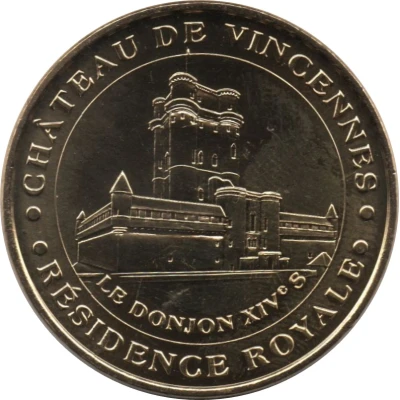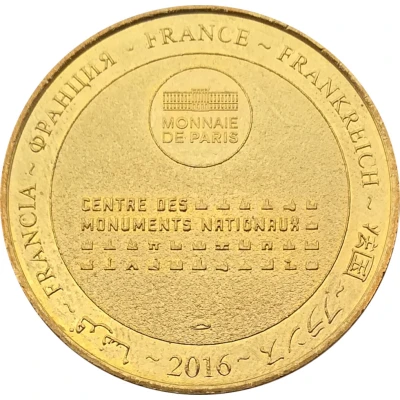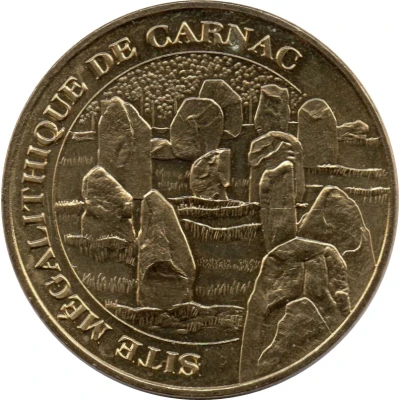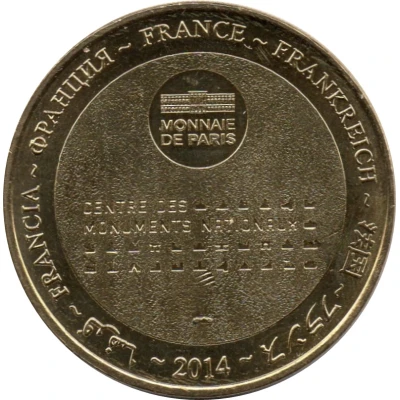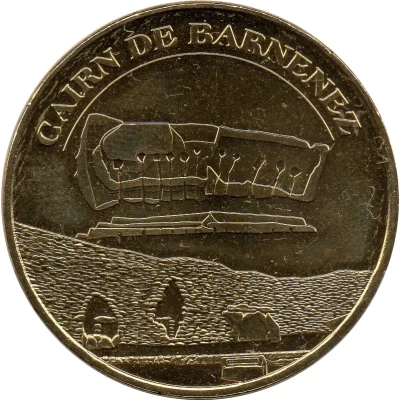
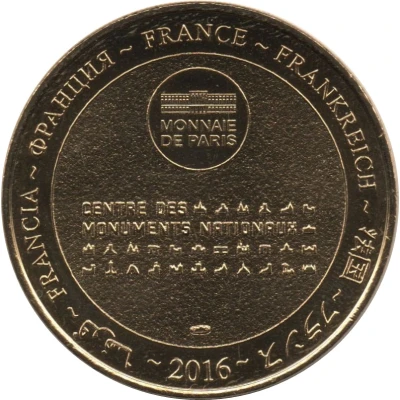

© Raoul Dusentier
Monnaie de Paris Tourist Token - Cairn de Barnenez
| Nordic gold | 15.87 g | 34 mm |
| Location | France |
|---|---|
| Type | Medals › Souvenir medallions |
| Years | 2014-2016 |
| Composition | Nordic gold |
| Weight | 15.87 g |
| Diameter | 34 mm |
| Thickness | 2.5 mm |
| Shape | Round |
| Technique | Milled |
| Orientation | Medal alignment ↑↑ |
| Updated | 2024-11-12 |
| Numista | N#128907 |
|---|---|
| Rarity index | 87% |
Reverse
Text France in six languages in the periphery. Symbol of the currency of Paris at 12 o'clock.
Lettering:
FRANCE ~ FRANKREICH ~ 法国 ~ フランス ~ 2016 ~ فرنسا ~ FRANCIA ~ ФРАНЦИЯ ~
MONNAIE
DE PARIS
CENTRE DES
MONUMENTS NATIONAUX
Edge
Reeded
Comment
The cairn of Barnenez (Kerdi Bras in Breton) is a megalithic monument of the Neolithic period located at the place called Barnenez in the commune of Plouezoc'h, on the northern coast of Finistère, in Brittany. With a length of 75 m, it is actually constituted of two dry stone cairns joined together, which cover eleven corridor dolmens. This set is the largest megalithic mausoleum after that of Newgrange and, with the cairn III of Guennoc, the oldest monument of Europe.The construction of the primary cairn testifies indeed with the tumulus Saint-Michel, which is located in Vannetais, and the site of Bougon, in Poitou, of the beginnings of Atlantic megalithism. It takes place around 4700 B.C. (in the interval between 5010 and 4400 B.C.), some 2,100 years before the oldest pyramid in Egypt and about 7,000 years after the beginnings of domestic architecture, which were observed in the Middle East among the Natufians of Mallaha, 5,000 years after the erection of the first monumental temple in Anatolia and 3,600 years after that of the tower of Jericho in the West Bank.
The construction of the secondary cairn, an extension, began around 4300, after the fall of the Great Menhir, and was completed around 4200. The remains of a third cairn, Kerdi Bihan, smaller and heavily damaged, are located about 100 meters northwest of Kerdi Bras. They have only been partially excavated. Some remains of a destroyed dolmen have been discovered there.
